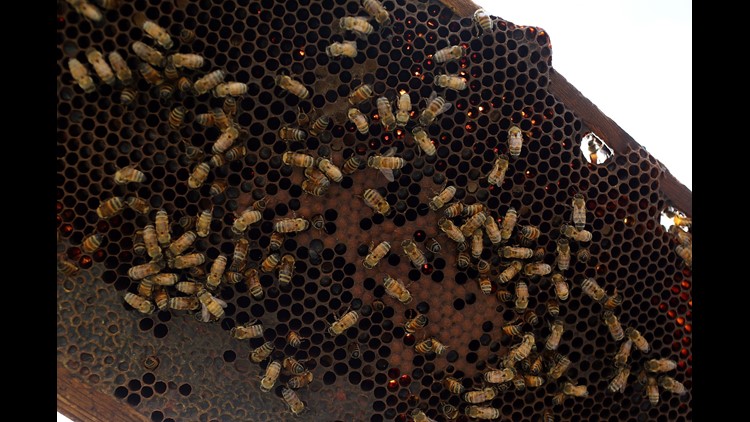The US Department of Agriculture will resume data collection for its annual Honey Bee Colonies report on October 1 — the start of a new fiscal year — after suspending the survey earlier this summer over budget constraints.
While researchers welcome the decision to resume the survey, some caution that it will leave a critical gap in this year’s data.
Dennis vanEngelsdorp, an entomologist who studies bee health at the University of Maryland, explained that missing even one quarter of data can undermine researchers’ ability to compare loss rates from year to year, one of the fundamental ways that experts and the honeybee industry can use the survey as they try to better understand honeybee population declines.
“It’s like having a GDP report with one quarter’s report missing,” he told CNN.
Bees help pollinate a third of the crops we eat, including almonds, apples, avocados and grapes, but populations have been steadily declining since 2006. That’s caused alarm not just in the US but in Europe as well. Pollinators like bees are under threat because of parasites like varroa mites, widespread pesticide use, habitat loss and the climate crisis.
CNN first reported the USDA’s decision to pause data collection in July.
Mace Vaughan, a co-director of the Pollinator Conservation Program at the Xerces Society, a conservation organization, also welcomed the USDA’s decision, adding that as long as there are no additional breaks in data collection the pause this last quarter should not have too negative of an impact in the long run.
Vaughan previously told CNN that it is crucial for researchers to have a “thermometer” to understand and reverse hive losses and that understanding what is happening with honeybees also helps researchers better understand what is impacting other pollinators.
The USDA did not respond to CNN’s questions about how much money the agency had saved by pausing the survey or whether it was concerned about how such a gap in the data could impact bee-related research.
The Honey Bee Colonies report is the third bee-related dataset to have been curtailed in some way under the current administration, and the move earlier this summer was viewed as another step toward undoing President Barack Obama’s government-wide focus on protecting pollinators, including bees and butterflies, whose populations have plummeted in recent years.
The report is an annual survey that gathers data on the number of honeybees per state by quarter, including those being lost with symptoms of colony collapse disorder, an issue that’s made honeybees a darling of environmentalists and climate activists. This past year’s survey results, with one quarter of the data missing, will be released in August 2020.
It’s one of two national surveys that track honeybee loss and the only one overseen by the federal government. The other survey, run by the Bee Informed Partnership, has been tracking data longer and relies on grant funding, including from the USDA, to support its work. The USDA survey is considered more statistically accurate, since it has access to a list of all registered beekeepers in the US, but it has been gathering data only since 2015.
The most recently available data shows that beehive loss reached its highest winter levels this past year, according to the Bee Informed Partnership’s most recent report.



